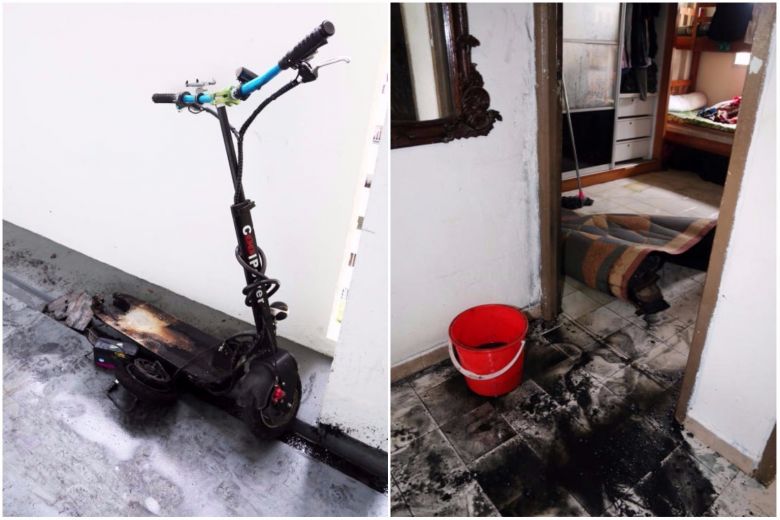Spike in e-scooter fires, emergency medical calls in 2017: SCDF
Sign up now: Get ST's newsletters delivered to your inbox

An e-scooter that was left charging overnight in the bedroom of a flat in Yishun caught fire on Nov 7, 2017. Forty electric scooters caught fire in 2017, said an SCDF spokesman, adding that battery fires were the cause.
PHOTO: LIANHE WANBAO
Follow topic:
SINGAPORE - More electric scooters caught fire last year, even as the number of calls about fires fell to a new low.
More calls were also made to the Emergency Medical Service (EMS), according to annual statistics released by the Singapore Civil Defence Force (SCDF) on Friday (Feb 9).
Forty electric scooters caught fire last year, up from nine in 2016, said an SCDF spokesman, adding that causes were electrical in origin, such as batteries.
Scooters have batteries that are packed with energy and contain flammable material, the spokesman said.
As a result, excessive impact, overcharging and faulty electrical circuitry can "trigger a fire... and result in serious damage to property and loss of lives", he added.
Overall, however, the number of fire calls fell from 4,174 in 2016 to 3,871 last year. This was the lowest since 1978, when there were 4,174 such calls.
Last year, one in two fires was caused by the indiscriminate disposal of lit materials such as cigarette butts, charcoal embers and incense sticks.
Seven in 10 fires happened in private and public homes, while every 10th fire happened in non-residential buildings such as shopping centres, markets and factories.
The rest took place in vegetation, vehicles and rubbish in open spaces.
Fires caused three deaths last year, one more than in 2016, and left 60 injured, two fewer than in 2016.
The SCDF also received 4,348 more calls to the Emergency Medical Service last year than in 2016, continuing a rising trend since 1998.

In 2017, the SCDF received 182,502 Emergency Medical Service calls - or about 500 a day - with 88.9 per cent of them attended to within 11 minutes, said the SCDF.
Of the 182,502 calls, nine in 10 were emergency calls. The rest were non-emergency calls or false alarms.
Medical-related calls about chest pain, breathlessness and heart attacks formed 75.5 per cent of the emergency calls.

Trauma cases, such as industrial accidents, falls and assaults, made up 18.2 per cent, while the rest were traffic accidents.
Four in 10 calls were for those aged 65 and above, the highest among all age categories.
The rise in the number of calls "affirms the need for SCDF's tiered response framework, so that scarce resources can be prioritised for the more urgent, severe cases", said the SCDF spokesman.
In April last year, the force shifted to an EMS tiered-response framework, amid tightened manpower resources and a rising number of 995 calls.
The new framework prioritises 995 calls based on callers' answers to a series of questions to determine the seriousness of patients' medical conditions. The tiers range from minor to severe emergencies.


